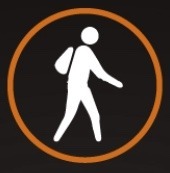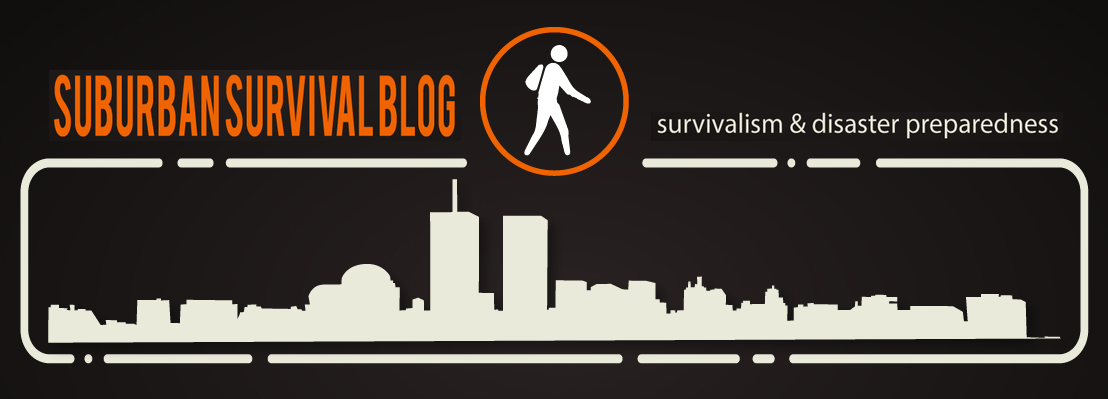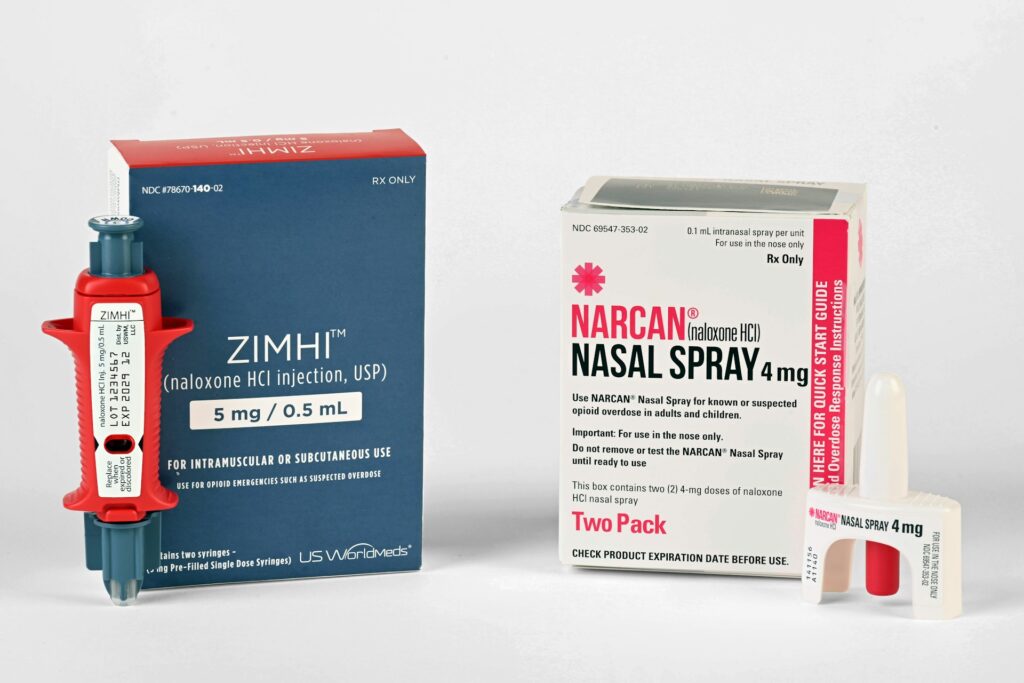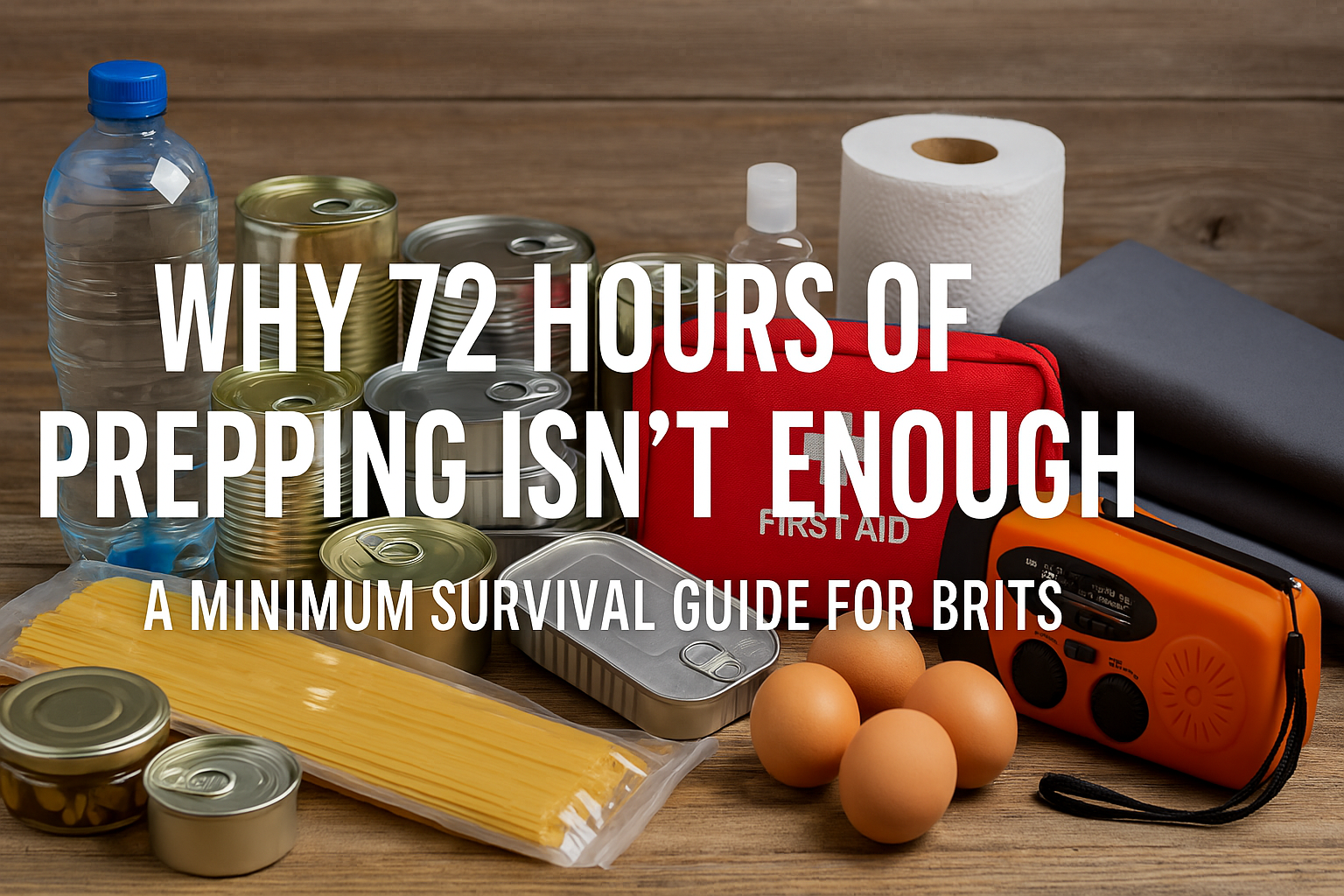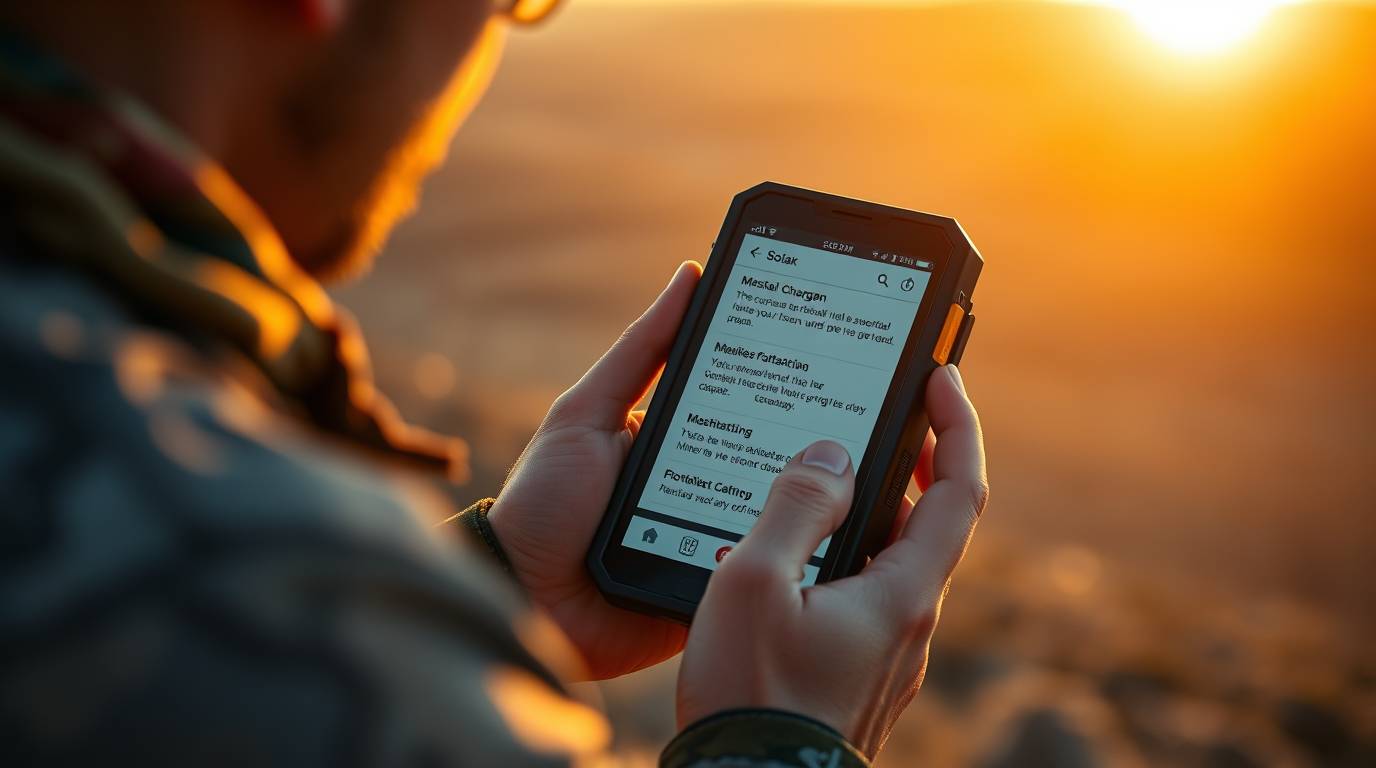Introduction
The concept of Every Day Carry (EDC) has become synonymous with readiness and the ability to respond to unexpected challenges. EDC is not just about the items we carry; it’s a mindset, a philosophy that underscores the importance of being prepared for any situation. Traditionally, an EDC kit might include practical tools like a knife, a flashlight, a pen, and a first aid kit, as an example. These are essentials that keep us prepared for daily tasks and potential emergencies. However, as we become more aware of the complex and ever-changing risks in our society, particularly in the health and safety domain, it has become evident to me that my EDC needs to evolve too.
The opioid crisis, especially the dramatic rise in fentanyl-related overdoses, presents a new kind of emergency — one that is silent but deadly and often strikes unexpectedly.
The United States is currently grappling with an unprecedented surge in fentanyl opioid-related deaths due to an influx of it coming over our southern border, making it a public health emergency of significant concern. The statistics are alarming – with tens of thousands losing their lives to opioid overdoses each year, a number that has been steadily climbing. The introduction of fentanyl, a synthetic opioid up to 50 times stronger than heroin, has exacerbated the crisis. Its potency and the fact that it’s often mixed with other drugs make it particularly dangerous, as many users are unaware of its presence.
In response to this growing crisis, I am considering an addition to my EDC – Narcan (naloxone), a medication designed to rapidly reverse opioid overdoses. This decision is driven by the recognition that preparedness extends beyond personal needs, encompassing the ability to respond to emergencies affecting those around us. By including Narcan in my EDC, I am not only equipping myself to handle a wider range of emergencies but also positioning myself to potentially save lives. This article delves into the reasons behind this critical addition to my EDC, reflecting a commitment to personal preparedness and community responsibility in the face of an escalating public health issue.
Understanding the Opioid Crisis
The opioid crisis represents one of the most severe public health emergencies in recent American history. Its roots can be traced back to the late 1990s, with the increased prescribing of opioid pain relievers. Initially viewed as a solution to chronic pain, these medications soon revealed their highly addictive nature, leading to widespread misuse.
As the crisis unfolded, it became apparent that opioids, including prescription pain relievers, heroin, and synthetic opioids like fentanyl, were not only highly addictive but also deadly. The National Institute on Drug Abuse reports a staggering increase in overdose deaths over the last two decades, with synthetic opioids, particularly fentanyl, becoming the most common cause. Fentanyl, owing to its extreme potency, has become a central figure in the crisis. It’s up to 100 times more potent than morphine and 50 times more potent than heroin, making even small quantities lethal.
This crisis has evolved in waves. The first wave, in the early 2000s, saw increased deaths due to prescription opioid overdoses. The second wave began around 2010, with a surge in heroin-related deaths. The current and most lethal wave, starting in 2013, has been marked by a significant rise in deaths involving synthetic opioids, especially fentanyl.
The proliferation of fentanyl is particularly concerning because it is often mixed with other drugs, either to increase potency or as a filler, without the user’s knowledge. This practice has dramatically increased the risk of overdose, even among individuals who may not be regular opioid users. The CDC highlights this as a key factor in the sharp rise in overdose deaths in recent years.
The opioid crisis is not just a health issue but a complex socio-economic problem. It affects individuals from all walks of life, transcending age, race, and socio-economic status, and has had a profound impact on families and communities across the United States. The crisis has put a strain on healthcare systems, law enforcement, and social services, while also contributing to a broader societal issue of addiction and mental health.
In response, there have been national and state-level efforts to control the prescription of opioids, increase public awareness about the dangers of opioid use, and expand access to treatment for addiction. Despite these efforts, the opioid crisis continues to pose a significant challenge, necessitating a multifaceted and sustained response from healthcare providers, policymakers, and communities.
Narcan as a Life-Saving Tool
Narcan (naloxone) is more than just a medication; it represents a critical tool in the fight against the opioid epidemic, a beacon of hope in what can often feel like a losing battle. This life-saving drug works by quickly reversing the effects of opioids, particularly in cases of overdose. Its significance in today’s society, where opioid overdoses are alarmingly common, cannot be overstated.
Naloxone’s mechanism of action is both rapid and effective. It binds to the same receptors in the brain as opioids, effectively blocking their effects, especially the life-threatening suppression of breathing. When administered during an opioid overdose, Narcan can quickly restore normal breathing in a person whose breathing has slowed or stopped. This immediate action is crucial, as every second counts in an overdose situation, and delayed treatment can lead to irreversible brain damage or death.
One of the key features of Narcan is its ease of use, making it accessible not only to healthcare professionals but also to the average person on the street. It is available in several forms, including a nasal spray and an injectable solution, both designed for quick and straightforward administration in emergencies. This simple-to-use design is vital, as it allows for prompt administration by bystanders, who are often the first to respond in overdose situations.
The impact of Narcan in preventing opioid overdose deaths is profound. Studies and reports have consistently shown that wider access to and use of naloxone is associated with significant reductions in overdose fatalities. Narcan’s role extends beyond just a medical response; it empowers communities and individuals to take an active role in addressing the opioid crisis. By carrying Narcan, individuals become part of a collective effort to save lives and counter the devastating effects of opioids.
Furthermore, Narcan’s importance is amplified in the context of fentanyl overdoses. Due to fentanyl’s high potency, overdoses can occur rapidly and with smaller amounts of the drug. Narcan’s ability to act quickly is therefore critical in these cases. It’s important to note, however, that due to the potency of fentanyl, multiple doses of Narcan may sometimes be required to reverse an overdose effectively.
In addition to its life-saving capabilities, the widespread availability and use of Narcan serve as a tangible reminder of the ongoing opioid crisis. It underscores the need for continued vigilance, education, and prevention efforts to combat this public health emergency. As such, Narcan is not only a practical addition to one’s EDC but also a symbol of awareness and a commitment to being part of the solution in the fight against the opioid epidemic.
My Preparedness Mindset and Narcan
Embracing a prepper’s mindset is fundamentally about readiness and resilience in the face of unforeseen circumstances. It involves a strategic approach to preparedness, extending beyond the conventional scope of emergency supplies and survival gear. In this context, the inclusion of Narcan (naloxone) in one’s EDC kit is not just a practical decision, but a profound embodiment of the prepper philosophy due to the unforeseen and widespread nature of fentanyl.
To illustrate, I have a soon-to-be seven-year-old daughter. As I see more and more deaths due to “exposure” to fentanyl, even fentanyl dust or powder residue, there is no reason not to carry it. It can be on a car door, blown through the air, put in an HVAC system, etc. Hell, I even thought about buying several doses and donating them to my daughter’s school, which I may still do.
The core of my preparedness mindset is anticipation – the ability to foresee potential dangers and prepare accordingly. In the realm of medical emergencies (of which I feel I am particularly weak as I have not taken medical, first aid, or CPR training in years, I am working to improve in 2024), especially in the wake of the opioid epidemic, being equipped with Narcan is a proactive measure I am willing to undertake. It’s an acknowledgment of the reality that fentanyl or opioid overdoses can occur anywhere and at any time, often in the most unexpected places – from public spaces to the quiet of one’s home. I.e. think Halloween and Trick or Treating… Ugh.
I should note that I have come to understand that preparedness is not solely about self-sufficiency in isolation over the years. It’s about being capable and ready to assist others in times of crisis as well, embodying a sense of community and responsibility, even if I am reticent to do so. Several years ago, probably a decade ago, a prepper acquaintance of mine, whom I met via Facebook, was speaking to me about running towards the danger to help others, finding himself becoming more involved in the community during a disaster situation, vs. contracting back into the preparedness shell. I am beginning (finally) to see his perspective. He was a US Army veteran, and training for a position within a CERT group in his community.
Carrying Narcan aligns with this ethos, providing individuals with the means to save a life potentially. It’s a tangible expression of a commitment to safeguard not just oneself, but also those around us – friends, family, and even strangers.
In addition, and my opinion, the preparedness approach to Narcan extends to education and continuous learning as mentioned earlier regarding my updated journey in first aid and medical training. Just as a prepper would learn to use a fire starter, to administer CPR, use a Tournequete, create a debris shelter, cook over a fire, etc., understanding how to recognize the signs of an opioid overdose and effectively use Narcan is an essential skill in the modern world, I think… It involves staying informed about the latest developments in the opioid crisis, understanding the nuances of different opioids like fentanyl, and keeping abreast of changes in medical guidelines and recommendations. This is an area I want to spend more time learning about. This is not something I ever thought I would have to think about, nor is it something I thought I would have to take preventive action on. But here we are.
My mindset on this also embraces adaptability and flexibility, key traits in emergencies, aside from having the ability to stay calm and level-headed. The opioid crisis is dynamic, with new challenges emerging, such as the increasing prevalence of fentanyl and other synthetic opioids. Integrating Narcan into one’s EDC is a response to this evolving landscape, demonstrating the ability to adapt to new threats and challenges in real time.
Moreover, Narcan’s inclusion in EDC kits, IFAKs, and First Aid Kits (which could get expensive based on the number of kits I have put together) symbolizes a broader awareness and acknowledgment of the complexities of the opioid crisis. It reflects an understanding that emergency preparedness is not just about natural disasters or personal safety, but also encompasses public health issues. By carrying Narcan, I feel I am not only preparing myself and my wife to act in emergencies but also raising my awareness about the opioid crisis and contributing to a broader personal effort to address it.
Adding Narcan to a prepper’s EDC is a decision deeply rooted in the principles of preparedness, in my humble opinion. It exemplifies foresight, community responsibility, adaptability, and a commitment to continuous learning and awareness. This decision enhances the ability to respond effectively to a prevalent and often overlooked emergency, reinforcing the prepper’s role as a versatile and responsible member of society.
Protecting My Family and Friends from Accidental Fentanyl Exposure
Based on the above section(s) and marked by the alarming prevalence of fentanyl, seemingly everywhere, there is a pressing need to safeguard our families and communities from accidental exposure. Fentanyl, a synthetic opioid, is not only potent but also deadly in very very tiny quantities, making accidental exposure a real and terrifying possibility. The risk is particularly high among children, who may inadvertently come into contact with this substance. Tragic incidents have occurred, for instance, involving children accidentally exposed to fentanyl patches, which can retain their potency even after use.
The imperative for safety begins with awareness and education. Understanding the potency of fentanyl and its various forms, including patches, pills, and powders, is crucial. Proper storage of any opioid medication is vital. Hopefully, you never need to. These substances should be kept in secure locations, well out of the reach of children and pets. Special attention should be given to the disposal of items like fentanyl patches. The FDA advises specific disposal methods to prevent them from falling into the wrong hands, underscoring the residual danger they pose even after their intended use.
Why would someone wear a fentanyl patch? Fentanyl patches are prescribed for managing severe, ongoing pain that necessitates constant, long-term pain relief and cannot be effectively treated with other medications. Belonging to the opiate (narcotic) analgesics class, fentanyl operates by altering the brain and nervous system’s pain perception. This makes it a potent option for pain management under specific, controlled circumstances.
Integrating Narcan into our emergency preparedness plans is a proactive step toward safeguarding our loved ones. I go back to this thought concept every time I think about my daughter and some of the useless deaths I have heard about on the news due to Fentanyl.
Naloxone is proven and is effective in reversing the effects of opioid overdose and can be a critical intervention in accidental fentanyl exposure scenarios. It is essential to have this antidote readily available and ensure that family members and close associates are knowledgeable about its use. This preparation is particularly significant in households where opioid medications are present. We do not have any, but I do not want to leave anything to chance…
As mentioned above, early recognition of symptoms such as difficulty breathing, extreme drowsiness, and unresponsiveness can prompt timely intervention, potentially saving lives.
The risk of accidental fentanyl exposure necessitates a multi-faceted approach encompassing secure storage and disposal of opioids, education about the dangers of these substances, and readiness for life-saving interventions like Narcan. This strategy empowers individuals and families to protect themselves and others from the hidden dangers of opioids, reinforcing a community-wide commitment to safety and well-being in the face of the opioid crisis.
Accessibility and Availability of Narcan
You may not be aware, but the accessibility and availability of Narcan have been significantly enhanced in recent years, reflecting a concerted effort to combat the opioid crisis. This expansion in access is critical, considering the rapid and effective action of Narcan in reversing opioid overdoses, including those involving powerful substances like fentanyl.
Narcan’s over-the-counter status, as approved by the FDA, marks a pivotal step in making this life-saving drug widely available. This decision allows individuals to obtain Narcan without a prescription, making it accessible in various locations such as pharmacies, convenience stores, grocery stores, and even online depending on where you live, the rural, suburban, and urban environment you live in. The ease of availability is crucial in increasing the drug’s presence in households and public spaces, thereby enhancing community preparedness against opioid overdoses.
In addition to over-the-counter options, Narcan is also available through various community-based programs and services, often at no cost. These programs not only distribute the drug but may also provide education and training on its use, further enhancing public understanding and readiness to deal with opioid emergencies. Such widespread distribution is vital in communities heavily impacted.
Further, the availability of Narcan has been bolstered by efforts from healthcare providers and public health organizations. They have been instrumental in raising awareness about the importance of having naloxone on hand, especially for individuals at higher risk of opioid overdose and their families. Medical professionals increasingly discuss the availability of Narcan with patients when prescribing opioids, thus integrating overdose prevention strategies into healthcare practices.
In light of this, the enhanced accessibility and availability of Narcan represent a significant opportunity for the public, especially those in the preparedness community to address the opioid epidemic. By making this crucial medication more readily available and ensuring the public is educated on its use, we can increase our collective capacity to respond effectively to opioid overdoses, potentially saving countless lives.
Legal and Ethical Considerations
The inclusion of Narcan in one’s EDC raises important legal and ethical considerations that go beyond its medical implications. Legally, most states in the U.S. have enacted Good Samaritan laws that provide legal protection to individuals who administer naloxone in good faith during an overdose emergency. These laws are designed to encourage bystanders to assist in overdose situations without the fear of legal repercussions. It’s important for individuals carrying Narcan to familiarize themselves with the specific legal protections offered in their state or region.
Ethically, carrying Narcan embodies a commitment to public health and safety. It reflects a moral responsibility to assist those in dire need, acting as a tangible expression of empathy and care for the well-being of others. This ethical stance aligns with broader societal values of helping those in distress and contributing to the safety and health of the community.
Moreover, there’s an ethical imperative to educate oneself and others about the risks of opioid overdose and the proper use of Narcan. Sharing knowledge and raising awareness can further empower communities to address the opioid crisis more effectively. In essence, carrying Narcan is not just a personal choice but a socially responsible action that resonates with the principles of community welfare and proactive health care.
Training and Education
Incorporating Narcan (naloxone) into everyday preparedness necessitates comprehensive training and education, crucial for effective intervention in opioid overdoses. The depth and accessibility of training resources have expanded significantly, catering to a diverse audience, from medical professionals to everyday citizens.
Online Training Courses
Various online platforms provide training on Narcan usage, including recognizing signs of opioid overdose and administering naloxone effectively. These resources are typically user-friendly, allowing broad accessibility for all individuals.
My understanding is that the ability to use Narcan effectively is crucial, and there are several resources available for comprehensive training:
- American Red Cross First Aid for Opioid Overdoses Online Course: The American Red Cross offers an online course titled “First Aid for Opioid Overdoses”. This course teaches how to recognize the signs and symptoms of an opioid overdose and how to provide appropriate care based on the person’s level of responsiveness. It includes instruction on administering naloxone using various products such as a nasal atomizer, Narcan Nasal Spray, and EVZIO. You can find more information about this course on the American Red Cross website.
- CDC Naloxone Training: The Centers for Disease Control and Prevention (CDC) offers naloxone training as a full module or separate mini-modules. These modules cover topics like assessing risk factors for opioid overdose, engaging patients in conversations about naloxone, and reducing stigma surrounding naloxone use. Continuing education credits are available upon completion of these modules. More information is available on the CDC website.
- Center For Rural Health Naloxone Trainings: The Center For Rural Health provides several online training options, including training for community health workers and representatives, as well as EMTs and law enforcement officers. These courses are designed to instruct participants in recognizing opioid overdose and administering naloxone. They can be completed asynchronously, online, and at the learner’s desired pace. Additional information on these trainings can be found on the Center For Rural Health website.
Each of these resources offers a unique approach to learning about opioid overdoses and the use of Narcan, catering to different learning styles and needs. They provide invaluable information and skills that can be crucial in emergency situations involving opioid overdoses.
Local Health Departments and Community Centers
These local entities frequently offer in-person training sessions. Conducted by healthcare professionals, these sessions often include practical demonstrations and hands-on practice with Narcan kits, equipping attendees with real-world skills.
Pharmacies
As frontline healthcare locations, some pharmacies offer quick training sessions on Narcan use. Pharmacists can demonstrate the proper use of Narcan nasal spray and provide crucial advice on actions to take in an overdose scenario.
Harm Reduction Organizations
These organizations focus on training and resources for naloxone use and overdose prevention. Their approach often encompasses broader aspects of harm reduction, providing a comprehensive understanding of the opioid crisis and mitigation strategies.
The incorporation of visual aids and resources from reputable stock photo websites can enhance the understanding and engagement of readers. Images such as Narcan kits, simulated training scenarios, or infographics on overdose response steps can be valuable additions to the training section of the article.
Training in Narcan administration is not just about the mechanical act of using the drug; it’s about understanding the broader context of the opioid crisis, recognizing the signs of overdose, and being prepared to act swiftly and effectively. This training empowers individuals to be proactive agents in their communities, ready to respond in life-saving situations.
Real-World Scenarios and Case Studies
The power of carrying Narcan as part of an EDC becomes evident through real-world examples where it has saved lives. A significant study by the Centers for Disease Control and Prevention revealed that nearly 27,000 lives have been saved due to Narcan kits given to friends and family for reversing opioid overdoses. This study highlights the effectiveness of Narcan in emergency overdose situations and the vital role it plays in communities affected by the opioid crisis.
Such examples underscore the importance of widespread accessibility and training in the use of Narcan. The cases demonstrate that overdoses often occur in the presence of other drug users or family members, who, with access to Narcan, can act promptly to save lives. This illustrates the critical need for Narcan to be included in EDC kits, not just by medical professionals but also by ordinary citizens, as a measure of preparedness against the growing challenge of opioid overdoses.
By equipping individuals with the knowledge and tools to respond to overdoses, communities can significantly reduce the number of fatalities associated with opioid misuse. The study emphasizes the life-saving potential of Narcan and the importance of community-based initiatives in addressing the opioid epidemic.
Integrating Narcan into My and/or Your EDC
Integrating Narcan into your Everyday Carry (EDC) involves thoughtful consideration of storage, accessibility, and readiness to use it effectively in an emergency. Here are some key aspects to consider for seamlessly incorporating Narcan into your daily preparedness routine:
- Understanding the Kit: Narcan typically comes in two forms – a nasal spray and an injectable solution. Familiarize yourself with the type you have, understanding how it functions, its expiration date, and storage requirements.
- Storage Solutions: Narcan should be stored in a place where it is easily accessible in an emergency but also secure. A small, portable, and durable case can protect Narcan from damage or accidental activation. This case can be placed in a regular spot in your daily bag, car, or workspace.
- Accessibility and Visibility: Store Narcan where it can be reached quickly. If you carry a bag or backpack, designate a specific pocket or compartment for the Narcan kit. Informing family members, friends, or coworkers about its location can be crucial in a situation where you might need someone else to access it.
- Regular Checks and Maintenance: Regularly check your Narcan kit for any damage and ensure it is within its expiry date. Set reminders to review the condition of your Narcan and replace it if necessary.
- Educational Materials: Keeping a small instructional card or booklet with your Narcan can be helpful, especially if someone who is unfamiliar with it needs to use it in an emergency.
- Training and Practice: Ensure that you and others who might need to use the Narcan are trained in its use. Regularly review the steps to administer Narcan and stay updated on any new guidelines or recommendations.
- Combining with Other Essentials: Consider what other items in your EDC could complement the Narcan kit. This might include gloves for personal protection, a breathing barrier for resuscitation, or information cards with emergency numbers.
- Psychological Preparedness: Mentally prepare yourself for the possibility of using Narcan. This involves understanding the emotional and psychological impact of responding to an overdose situation and being mentally ready to act calmly and effectively.
By integrating Narcan into my or your EDC with careful planning and regular upkeep, we ensure that we are prepared not only for our mutual personal safety but also to assist others in a potentially life-saving situation. This proactive approach underscores a commitment to personal responsibility and community care.
Conclusion
Given the statistics and trends in opioid-related emergencies, particularly the surge in fentanyl overdoses, including Narcan in my EDC seems not only prudent but necessary. It aligns with the preparedness mindset and broadens the scope of being ready to handle emergencies. By carrying Narcan, I am not just prepared to protect myself but also to extend help to others, embodying a deeper sense of community responsibility and care.
Resources Utilized:
- Drug Overdose Death Statistics [2023]: Opioids, Fentanyl & More: This resource provided statistics on opioid overdoses in the United States, emphasizing the significant role of fentanyl in recent years. Drugabusestatistics.org
- National Institute on Drug Abuse: This site offered information on the increase in overdose deaths over the last two decades, particularly those involving synthetic opioids like fentanyl. National Institute on Drug Abuse
- U.S. Food and Drug Administration: This resource discussed the over-the-counter availability of Narcan nasal spray, making it easier for individuals to obtain this life-saving medication. U.S. Food and Drug Administration
- Centers for Disease Control and Prevention: The CDC provided information on the life-saving potential of Narcan, especially in situations where medical help is not immediately available. Centers for Disease Control and Prevention
- USA Facts: This source provided insights into the rise in fentanyl overdose deaths and the factors contributing to this increase. USA Facts
- American Red Cross First Aid for Opioid Overdoses Online Course: The American Red Cross offers an online course that teaches how to recognize the signs and symptoms of an opioid overdose and how to provide appropriate care. American Red Cross
- CDC Naloxone Training: The CDC offers naloxone training as a full module or separate mini-modules, covering topics like assessing risk factors for opioid overdose and engaging patients in conversations about naloxone. Centers for Disease Control and Prevention
- Center For Rural Health Naloxone Trainings: The Center For Rural Health provides several online training options, including training for community health workers and representatives, as well as EMTs and law enforcement officers. Center For Rural Health
